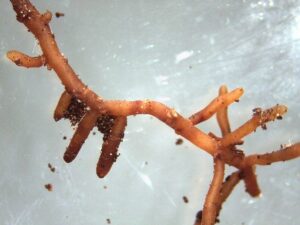Fungi are typically a group of eukaryotic unicellular or multicellular spore developing heterotrophic organisms. More than about 148,000 fungi species are present throughout the world.
Let’s discuss about some eukaryotic fungi examples with their features respectively.
Let’s have a closer look to these eukaryotic fungi examples respectively-
Mushrooms
Mushrooms are refers to a group of fungi species bearing umbrella shaped fruiting bodies. They are mostly macroscopic and grow on soil or on its own nutritional source. They typically have a stipe (stem), a pileus (cap) and gills. Some examples of mushrooms are Agaricus bisporus, Agaricus campestris, etc.
Yeasts
Yeast are single celled fungi species having ability to adapt multicellular characteristics during adverse situations. They are typically small in size (about 3–4 µm in diameter). Yeast are generally found in sugar rich environments like on the skin of fruits, on flower’s nectar. Sachharomysis cerevisiae is one of the largly used yeast species for fermatation process.
Molds
Molds are groups of multicellular filamentous fungi species having thread like filaments (hyphae). The network of hyphae makes mycelium. Molds reproduce by conidia formation from the end tip hyphae. Aspergillus niger, Aspergillus flavus are examples of some most common mold species.
Rusts
Rusts are obligated parasites, highly pathogenic in nature. They are causing high damages in case of agriculture, horticulture and etc. Approximately 168 genera and 1000 rust species are found worldwide. They are able to produce up to five different spore producing structures like spermogonia, aecia, uredinia, telia and basidia throughout their lifecycle. Puccinia coronata, Puccinia striiformis are examples of Rusts fungi species.
Smuts
Smuts are typically pathogenic to cereals, crops and members of the grass family. They undergo reproduction and form dikaryotic hyphae ( by fusing to haploid cells). They produce a large number of dark, thick-walled, dust like teleospores. Tilletia laevis, Tilletia caries are examples of Smut species.
Mildews
Mildews are a group of fungi species slightly distinct from typical molds. They superficially grow on plant’s bodies or on organic matter such as wood, paper, leather, etc. They are appearing whitish in color and may cause damage to its host. Erysiphe cichoracearum, Erysiphe alphitoides are examples of some common mildew species.
Truffles
Truffles are a group of fungi species bearing a highly nutritious fruiting body. Most of the truffles live in a mutualistic relationship with a plant host. The mycelium forms mycorrhizal connection with the roots of that plant host and exchange nutrients. Truffles are used as a nutritional food supplement very largly. Tuber melanosporum, Tuber brumale are some most common truffle species.
Puffballs
Puffballs are another type of eukaryotic fungi examples bearing a brown dust like spores. Some species of Puffballs are highly poisonous and deadly. Puffballs lack the open cap with spore bearing gills that’s why the spores develop internally. After maturation the spores emitted. Most of the species do not have a typical stalk. Some examples of Puffball fungi species are Battarrea phalloides, Bovista dermoxantha, etc.

Eukaryotic Fungi example: truffles from pixabay
Among all these eukaryotic fungi examples only yeast are single celled fungi species having ability to adapt multicellular characteristics.
There are some microorganisms often called fungi but they are do not belongs to kingdom fungi. For example slime molds are unicellular eukaryotic organsims generally free living but in presence of obstacles they can achieve multicellular characteristics. They are often called as fungi but do not belongs to the kingdom fungi.

Eukaryotic Fungi example: mushrooms from pixabay
Types Of Eukaryotic Fungi
The Eukaryotic fungi are subdivided based on their mode of nutrition and on the basis of their spore formation methods.
Firstly based on their mode of nutrition, there are majorly three types of fungi species present, including parasites, saprophytes and symbionts.
- Parasites: These are heterotrophic fungi, living on another organism’s body (host), absorbing nutrients from them for survival. They are majorly pathogenic to their host. For example Puccinia sp.
- Saprophytes: These fungi species grow on dead and decaying organisms or on organic matters, and absorb nourishment from them. In nutrient cycling process the role of saprophyts is immense. For example Penicillium sp.
- Symbionts : These fungi species share a mutualistic Symbiotic relationship with others. For example Tuber melanosporum, Tuber brumale are some most common symbiont fungi species among them.
Some symbiont fungi species associate with a plant host and make mycorrhiza (symbiosis relationship) where both of them benefited. The plant gives the fungi carbohydrates by photosynthesis and the fungi supplies plant water and minerals (phosphorus) to the plant.

Mycorrhiza association from pixabay
Some fungi are associated with algae and develop symbiotic relationships between them, called Lichens. The algae synthesis carbohydrates for the fungi and the fungi gives shelter to that algae.
Based on the spore formation format there are following types of fungi species present-
- Zygomycota: Zygomycota fungi species are the true kind of fungi forming hyphae and myclelium. They are able to produce more resistant spherical zygospores by reproduction. They also produce spongiospores. In case of zygospores two different kind of cells or hyphal strands are fused to make the it. They are majorly found in soil, on organic matters or on dead and decaying organisms. For example- Rhizopus stolonifer.
- Ascomycota: They are commonly known as sac fungi. They bear an identifying reproductive structure called ascus (ascus means sac). Which forms non-motile spores, called ascospores. These fungi also able to form conidiospores. Mostly saprophytes. Examples- Baker’s Yeast or Saccharomyces cerevisiae.
- Basidiomycota: Basidiomycota includes members of mushrooms, puffballs, yeasts,stinkhorns, etc. They are filamentous fungi producing basidiospores and conidia. Examples – Agaricus bisporus.
- Deuteromycota: Commonly known as imperfect fungi as they do not follow any kind of reproduction rule. Their some reproduction phases remain unknown and they produce conidia. Examples- Trichoderma sp.
- Chytridiomycota: Microscopic species, found in freshwater or wet soil. They mostly reproduce by forming motile zoospores having flagellum like whiplash structure posteriorly. Majorly parasitic and saprophytic in nature. Examples – Batrachochytrium dendrobatidis.
There is also a class called glomeromycetes under glomeromycota. Around 230 described species under this group. They are mostly arbuscular mycorrhizas with some plant species. They are mostly reproduce by forming glomeruspores through the hyphal tips. But the phylum glomeromycota is now invalid, only existing as class glomeromycetes.

Slime molds from pixabay
Are Fungi Eukaryotic?
Fungi are Eukaryotic organisms. They possess a membrane bound eukaryotic kind of well organized cell structure also having a member bound proper nucleus in it. They are predominantly multicellular and some are unicellular (yeast). Some eukaryotic fungi examples are mushrooms, molds, yeasts, truffles, etc.
To know more about Eukaryotic cells read our article on Eukaryotic Cells Examples: Detailed Insights
Which Fungi Are Eukaryotic?
All fungi are eukaryotic, they possess a complex eukaryotic kind of cellular structure and membrane bound proper nucleus in it.
What Are The Eukaryotic Characteristics Of Fungi?
As we previously said, fungi are typically eukaryotic organisms. They possess severals of eukaryotic characteristics such as-
- The cell of fungi is consist of a true enclosed membrane bound nucleus. The nucleus contains chromosomes with DNA.
- The DNA of fungal cell consist of both the non-coding regions introns and coding regions exons, hence they are considering eukaryotics.
- The cytoplasm contains membrane bound organelles like mitochondria, 80S type of ribosomes.
- They have a cell wall outside of their cell composed of chitin (C8H13O5N).
- Comprises cell membrane, having unique sterol and ergosterol.
- DNA in the nucleus wrapped up with Histone proteins.
- Horizontal transfer of genetic material is rarely found in fungi.
- Cells consist of complex systems of internal membranes like endoplasmic reticulum and Golgi bodies.
- They reproduce by forming different kinds of spores, such as ascospores, zygospores, basidiospores, zoospores, conidiospore, spongiospores, etc.
- Multicellular fungi can develop hyphae and mycelium networks.
- Alterations of generations can be seen in life cycle that means a fungi species have both haploid and diploid stages in their lifecycle alternatively.
- They are non vascular organisms, that means they lack xylem and phloem tissues.
- Fungi do not have any kind of embryonic stages in their lifecycle.
- They are mostly non motile, remaining attached to some substance or it’s host.
- They can store food as starch.
- They are able to synthesize chitin in their body.
- The fungi cells undergo mitosis and meiosis divisions. During division process the nuclear membrane does not dissolve.
To know more about DNA structure read our article on DNA Structure
As a whole, we briefly describe all the possible aspects of eukaryotic fungi examples. We discuss about the types of fungi species based on their mode of nutrition and based on their spore formation methods. Here we also mention all the eukaryotic characteristics of fungi. We know about some common associations between fungi species and some other organisms such as lichens, mycorrhizas, etc.
Also Read:
- Inelastic collision examples
- Interference of sound examples
- Photoautotrophic bacteria examples
- Linear motion examples
- Conservative force examples
- Hypothesis examples
- Non contact force examples
- Double bond examples
- Alloy examples
- Actuators examples

Hello, I am Piyali Das, pursuing my Post Graduation in Zoology from Calcutta University. I am very passionate on Academic Article writing. My aim is to explain complex things in simple way through my writings for the readers.